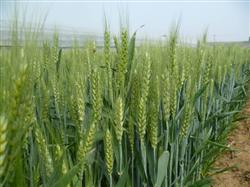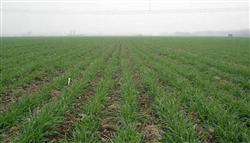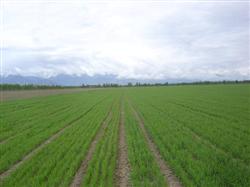Which diseases and insect pests should be paid attention to during the filling stage of wheat?

Which diseases and insect pests should be paid attention to during the filling period of wheat? Please introduce that during the period of the Beginning of Summer, winter wheat in the north generally entered the flowering and filling stage, and there was a relatively large demand for water. Due to the high humidity in the field, wheat aphids, stripe rust and other diseases and insect pests further developed and spread. Therefore, in the near future, various parts of the northern winter wheat region also need to strengthen the late management according to the soil moisture and growth of the wheat field to ensure the normal growth of wheat. Rain Water provided sufficient water for wheat at the filling stage, but also provided conditions for the occurrence and development of diseases and insect pests. Wheat aphids and stripe rust were found in some winter wheat areas in the north, so we should take timely control measures. In addition, wheat is about 10 days after flowering, where there are watering conditions, grouting water should be watered well, but it is best to stop watering when it is windy to prevent lodging. Data: wheat aphids are widely distributed in almost every wheat-producing country in the world. There are many kinds of aphids that damage wheat in China, and the common and important ones are: wheat aphid, wheat aphid, Rhopalosiphum gossypii and APHIS gossamer. Except for the narrow distribution range of APHIS gossypii in China, the other aphids are common in all wheat areas, but the occurrence numbers of APHIS gossypii and APHIS gossypii are the most serious. Generally, the density of APHIS gossypii is quite high in both the south and the north, but the occurrence is more serious in the north. The aphid mainly occurs in the provinces north of the Yangtze River, especially in the northwest winter and spring wheat areas with less rain. For wheat aphids and wheat aphids, in addition to hosts such as wheat, barley, oats, millet, sorghum and corn, wheat aphids can also damage gramineous crops such as rice, sugarcane and Zizania caduciflora, and weeds such as early-maturing grasses, sorghum, sorghum, sorghum and wild oats. Wheat aphids can feed on grass weeds such as Leymus, wheatgrass, brome, star grass and horse grass. The damage of symptom wheat aphid mainly includes two aspects: direct damage and indirect damage: the direct damage is mainly caused by adult and nymph feeding on the sap of leaves, stems, tender heads and young ears. Most of the wheat long tube aphids do harm to the upper leaves of the plant, and proliferate rapidly after heading and filling, focusing on the ear. Wheat bifurcate aphids like to damage the crops at the seedling stage, and the damaged parts form withered spots, but other aphids do not have this symptom. Indirect damage means that wheat aphid can spread wheat virus disease at the same time, among which the transmission of wheat yellow dwarf disease is the most harmful. The overwintering behavior and places of wheat aphids vary according to local climatic conditions. when there is no overwintering period in the south, the wingless female aphids in the wheat region of the north and the Yellow River valley stand in the leaves or soil crevices at the base of the wheat plant, and in the colder wheat areas in the north, most of the eggs overwintered on the withered leaves of wheat seedlings, weeds, stubble tubes and soil cracks, and the more northward, the higher the overwintering rate of eggs. From the point of view of the occurrence time, the wheat aphid was earlier than the wheat aphid, and the wheat aphid generally became more serious after the jointing of wheat. Wheat aphids occur intermittently and rampant, which is closely related to climatic conditions. The wheat aphid likes the medium temperature and is not resistant to high temperature, requiring a humidity of 40% to 80%, while the wheat aphid is resistant to a high temperature of 30 ℃, likes to be dry and afraid of humidity, and the humidity is 35% to 67%. Generally, in early sowing wheat fields, aphids migrate early, reproduce quickly and cause serious damage, and the species and area of summer and autumn crops are directly related to the oversummer and reproduction of wheat aphids. ⒈ agricultural control ⑴ rational distribution of crops, winter and spring wheat mixed areas as far as possible to make it simple, autumn crops as far as possible corn and millet and so on. ⑵ selected some insect-resistant and disease-tolerant wheat varieties, resulting in poor food conditions. ⑶ winter wheat should be sowed late, winter irrigation should be carried out, and rake and mill should be suppressed in early spring. ⒉ chemical control should pay attention to the appropriate period of control and the control function of protecting natural enemies. The control of wheat aphid in the suitable period of ⑴ should pay attention to the control of autumn seedling stage, green stage and jointing stage, and the control of wheat aphid at the end of flowering stage was the best. ⑵ chooses ① to use 40% dimethoate EC 2000 × 3000 times or 50% phoxim EC 2000 times, spray with water; ② uses 50% aphid spray wettable powder 10 grams per mu, 50% aphids 60 kg spray; ③ uses 50% aldicarb 4000 × 5000 times liquid spray control. Click to get more wheat planting technology click to get more grain planting technology
- Prev

How to Control Diseases and insect pests in Wheat Seedling stage
How to control diseases and insect pests in wheat seedling stage? Please guide that in general, about 15 days after wheat sowing, the wheat seedlings will basically grow, so in the future, how to manage and protect the wheat seedlings is very critical. The author recommends several methods to control wheat seedling diseases and insect pests. Wheat rust 15 years after wheat emergence.
- Next

How to manage spring wheat?
How to manage spring wheat? Please introduce the spring wheat management can refer to the following: 1, what are the main diseases, insect pests and weeds of wheat prevention and control in spring? The main work of wheat diseases, pests and weeds in spring is to control weeds in wheat fields. The main weeds in wheat fields in our county are: Gramineae weeds: Aegilops tauschii, brome, wild oat, broad leaves.
Related
- The first cup of black tea in spring, the flavor and history of tea gardens in Kenya, Africa
- The computer can not only choose potatoes, but also grow tea rice. AI will grow winter oolong tea champion.
- It is not only the inflated tea bitten by insects, but also engraved with the four seasons tea in Beipu.
- The Oriental Beauty Tea Festival in Zhuxian County takes the stage at the weekend to experience the plus-size feast of oil tea.
- & quot; Oriental Beauty Tea & Exploration of Emei in Hsinchu, the hometown of quot;
- The new variety of strawberry "Tainong 1" dessert is the first choice with mellow aroma. Crimson gorgeous
- History of Tea in Taiwan: from Wild Inner Mountain to Export Tea Garden
- Two types of Taiwan Oriental Beauty Black Tea won the British three-Star Award for Childhood Tea Xiang Zhang Jiaqi changed from pilot to champion tea maker.
- Banana species and varieties: the planting history of Taiwan Xianren banana and dwarf banana is long, is banana disease resistant?
- Coffee planting Technology: Qianjie Coffee from Seedling to harvesting

